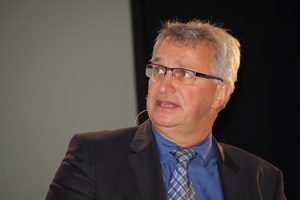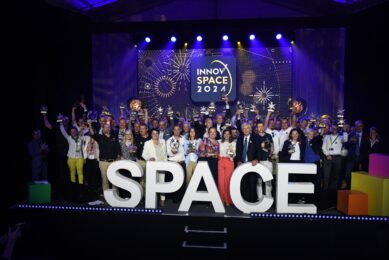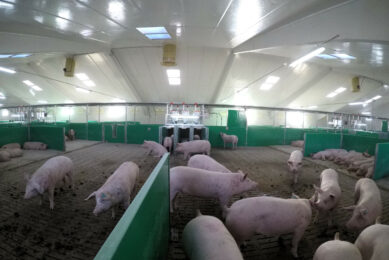Breeding and feeding get closer in next 10 years

Breeding and feeding of livestock animals will be two fields that will be getting closer together in the next decade.
This opinion was put forward by Dr Martin Scholten, Wageningen University, the Netherlands at the first day of the Provimi Animal Nutrition Seminar 2013 in Barcelona, Spain.
He touched on themes like ‘customised nutrition’ which could become breed specific – and a development the other way round, how genomics based selection could be feed specific. “Now this sounds futuristic, but I’m sure in five to ten years these fields will come together,” Scholten said.
Scholten was one of the key speakers at the first day of the event, which is themed ‘Animal Nutrition 2.0’. Like many others he spoke of the challenges for future livestock production in order to meet future demand to animal protein in 2050 – over 9 billion souls as is projected by the United Nations.
Getting there would have to mean that the world needs to produce better and more food but using less raw materials. The challenge for Provimi, part of Cargill, is how to play a role in this.
Scholten put the topic into context by introducing four ‘animal perspectives’ – or four moments in which animals and feed come together, and where positively influencing can be possible. He touched on feed, the rumen, manure and grass. In each of these perspectives potential of adaptation is key.
The bigger picture is a story which is more often told by lecturers of Wageningen University. Scholten compared farming of the future as a large wheel that is going round, with areas that continue to influence each other. A so-called ‘one health’ approach, involving both humans and livestock, leads to more attention for ‘customised care’ – or giving animals the best food and the best conditions possible. When doing that, ‘nuisance to the environment’ is less. All should lead to ‘credible performance’.
Sustainability
Dr Marty Matlock, University of Arkansas, USA, also dived into the theme of 2050 at the event, and gave a careful definition of ‘sustainability’. He spoke of the triangle ‘people, profit, planet’. When the interests of ‘people’ and ‘profit’ meet, a situation occurs which is called ‘equitable’, he said. When the interests of ‘profit’ and ‘planet’ meet, this leads to a situation that can be called ‘viable’. When the interests of ‘people’ and ‘planet’ are met it can be called ‘bearable’. But only when all three overlap, then we can speak of ‘sustainable’, he explained.
What is sustainable is often misunderstood, he said. Matlock quoted Jason Clay, WWF, while giving examples of ‘persistent issues’, put forward by some pointing to:
• Locally grown produce
• GMO crops (is this good?)
• Organic crops
• Natural production
Important issues, in his view, with regard to sustainability are:
• Water use efficiency
• Soil erosion
• Soil organic carbon
• Land use change – biodiversity loss
The definition of sustainable agriculture, therefore would be that it is meeting the needs of the present while enhancing the ability of future generations to meet their needs, by:
* Increasing productivity to meet future food demands
* Decreasing impacts on the environment
* Improving human health
* Improving the social and economic well-being of agricultural communities.
Measuring and applying sustainability, he then went on to explain the development of a Key Performance Index.











